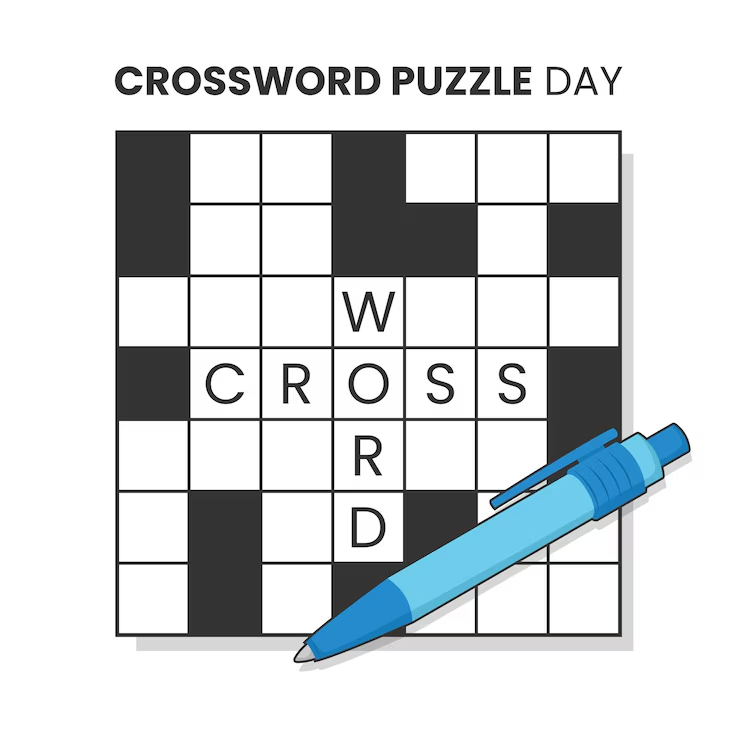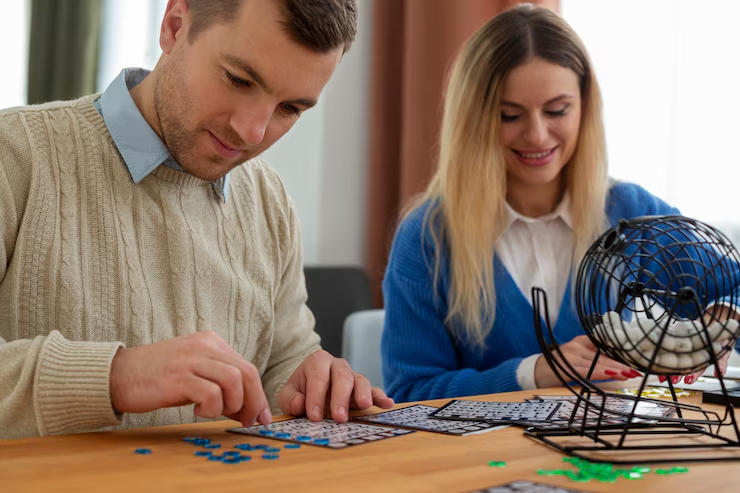NYT Mini Crossword Clues are a fantastic way to challenge your brain and have some fun at the same time. These small puzzles, which are part of the New York Times daily crossword section, are easy to play but still make you think! Whether you’re a beginner or a crossword expert, the NYT mini crossword clues offer a delightful way to test your knowledge and improve your vocabulary. Each day brings a fresh challenge that can be solved in just a few minutes, making it perfect for a short break during the day.
The key to mastering NYT mini crossword clues is practice and patience. When you first start, it might feel tricky, but over time, you’ll get better at spotting patterns and understanding common clues. For example, short words like “VAMP” or “VOGUE” often appear in these puzzles, and learning the most common crossword abbreviations can help you a lot. Some people even make it a daily routine to do the mini crossword puzzle, which helps them stay sharp and improve their problem-solving skills. Keep at it, and soon you’ll find yourself solving these puzzles faster than ever!
How to Solve NYT Mini Crossword Clues: A Beginner’s Guide
If you’re new to the NYT mini crossword clues, the best way to start is by looking for short, easy clues. These are usually the most straightforward and can help build your confidence. Focus on simple, common words like “SUN” or “BAT,” and as you get more comfortable, try to solve longer clues. Don’t be afraid to guess and fill in answers based on your best guess—sometimes, even wrong answers can lead to finding the right ones later. Be patient with yourself and remember that every puzzle you complete makes you better at solving the next one. It’s all about practicing regularly and improving your skills over time.
The Secrets to Mastering NYT Mini Crossword Clues
Mastering NYT mini crossword clues comes with time and practice. One key secret is to learn crossword-specific patterns. For instance, many clues are straightforward synonyms, so getting familiar with common crossword answers like “ERA” or “OGRE” can be helpful. Another secret is to work with cross-checking words. For example, if you’re unsure of a word, try filling in other clues and see how they match with the word you’re uncertain about. Practice helps you notice patterns in the way clues are structured, and the more you do puzzles, the more easily you will recognize these patterns.
Why NYT Mini Crossword Clues are Perfect for Daily Brain Training
NYT mini crossword clues are great for brain training because they are quick yet challenging. These puzzles help exercise your brain by forcing you to think in different ways. They encourage problem-solving, increase vocabulary, and improve memory by requiring you to recall familiar words and abbreviations. Solving these puzzles every day helps keep your mind sharp, making it a perfect exercise for those who want to keep their brain active without spending too much time. With only a few minutes needed to complete, the mini crossword is a simple but effective way to stay mentally fit every day.
Top Strategies for Solving NYT Mini Crossword Clues Quickly
To solve NYT mini crossword clues quickly, try starting with the easiest clues first. These often involve short words that can help fill in the longer ones. Once you’ve filled in a few answers, you’ll have more letters to work with, making it easier to guess the rest of the answers. Another strategy is to look for common abbreviations and word endings like “-ed” or “-ing.” Many puzzles also have themes, so recognizing patterns in the answers can speed up solving. Lastly, if you’re stuck, don’t hesitate to take a short break and come back with a fresh mind.
Understanding Common NYT Mini Crossword Clues and Their Solutions

NYT mini crossword clues often use common abbreviations or wordplay. For instance, clues that involve colors may use short words like “RED” or “IVORY.” Knowing these common shortcuts can help you solve clues faster. Some clues will also have wordplay or puns, where the answer isn’t the literal meaning but something more playful. For example, a clue that asks, “Wipe out” might not mean “clean,” but instead “erase.” Understanding these types of clues and practicing regularly helps you to quickly spot the answer. Being familiar with common crossword clues will allow you to solve puzzles with ease.
Tips and Tricks for Cracking Even the Toughest NYT Mini Crossword Clues
When tackling tough NYT mini crossword clues, try using the process of elimination. If a clue doesn’t immediately make sense, write down all possible answers, even if they’re far from perfect, and check them against other answers. This approach helps eliminate wrong options and brings you closer to the correct one. Additionally, think about the clue’s definition and its word length—if a clue asks for something that’s 3 letters long, you know the answer must fit. Don’t rush; take your time to think about each word and clue. Over time, your ability to solve tougher clues will improve.
The Best Way to Improve Your Skills with NYT Mini Crossword Clues
To improve your skills with NYT mini crossword clues, consistency is key. Practice solving the puzzles every day, even if it’s just for a few minutes. The more you practice, the more familiar you’ll become with common crossword clues, abbreviations, and word patterns. In addition, try solving puzzles in different ways, such as by focusing on one section first or solving across and down at the same time. This helps you to develop a flexible approach to solving clues. As your confidence grows, you’ll find that you can solve the mini crossword in less time with fewer mistakes.
What Makes NYT Mini Crossword Clues Different from Regular Crosswords?
NYT mini crossword clues differ from regular crosswords in that they are shorter and quicker to solve. A typical mini crossword puzzle only has a 5×5 grid, while regular crosswords have larger grids with more challenging clues. The clues in mini crosswords are often simpler, and they’re designed to be completed in just a few minutes. This makes them perfect for those who are short on time but still want to enjoy the challenge of solving a crossword. While regular crosswords may involve more complicated clues, mini crosswords focus on quick, bite-sized puzzles that are great for daily practice.
Daily Practice with NYT Mini Crossword Clues: How to Get Better Fast
The best way to get better at solving NYT mini crossword clues is to practice daily. Regular practice helps you get familiar with the types of clues that commonly appear, like abbreviations, colors, and simple synonyms. By solving the mini crossword every day, you’ll start to recognize patterns and anticipate what types of answers are most likely. It’s important to not only practice but also challenge yourself by trying harder puzzles over time. This will help you sharpen your skills and improve your solving speed. The more you practice, the more confident you’ll become in solving even the trickiest clues.
A Fun Challenge: Exploring the World of NYT Mini Crossword Clues
NYT mini crossword clues offer a fun and engaging challenge that’s perfect for crossword enthusiasts of all ages. These puzzles are small but packed with clever clues that make you think in creative ways. Whether you’re solving them during a break or in your free time, they provide an enjoyable way to stimulate your mind. Unlike regular crossword puzzles, the mini version offers a short burst of challenge, allowing you to complete it quickly. With a bit of practice, you can enjoy the satisfaction of solving these puzzles daily, adding a fun mental workout to your routine.
How to Tackle Hard NYT Mini Crossword Clues with Confidence

Tackling hard NYT mini crossword clues requires patience and a systematic approach. When you face a difficult clue, don’t panic! Start by looking at the word length and the letters you already know. Sometimes, guessing a letter in the middle of a word can help you fill in the rest. Use cross-checking clues to verify your guesses, and if you get stuck, take a break and return with fresh eyes. Confidence comes with practice—after a few tough puzzles, you’ll find that your ability to solve harder clues improves, and solving these tough puzzles will become easier and more rewarding.
Conclusion
In conclusion, solving NYT mini crossword clues can be a fun and rewarding experience. By practicing daily, you can improve your skills and get faster at solving the puzzles. Remember, it’s okay to make mistakes—it’s part of the learning process! With patience and consistent practice, you’ll start to see your crossword-solving abilities grow. So, don’t worry if it feels tricky at first, because every time you solve a puzzle, you’re becoming better.
Crossword puzzles are also great for keeping your brain sharp. They’re like a mini workout for your mind! With time, you’ll not only improve at solving crosswords, but you’ll also develop your memory, vocabulary, and problem-solving skills. So, keep solving, and soon you’ll be tackling those tricky clues like a pro!
FAQs
Q: How long does it take to solve a NYT mini crossword puzzle?
A: It usually takes about 5-10 minutes to solve a NYT mini crossword, depending on how tricky the clues are.
Q: Are NYT mini crossword clues harder than regular crossword clues?
A: No, they are smaller and simpler, but still challenging. They are meant to be solved quickly.
Q: Can I solve the NYT mini crossword without any experience?
A: Yes! Even beginners can start solving the NYT mini crossword. Just practice and take your time.
Q: How can I get better at solving NYT mini crossword clues?
A: Practice daily, and pay attention to common clues like short words, abbreviations, and familiar phrases.
Q: Can I use a dictionary while solving NYT mini crossword clues?
A: It’s okay to use a dictionary if you’re stuck, but try to solve it without help first to improve your skills!